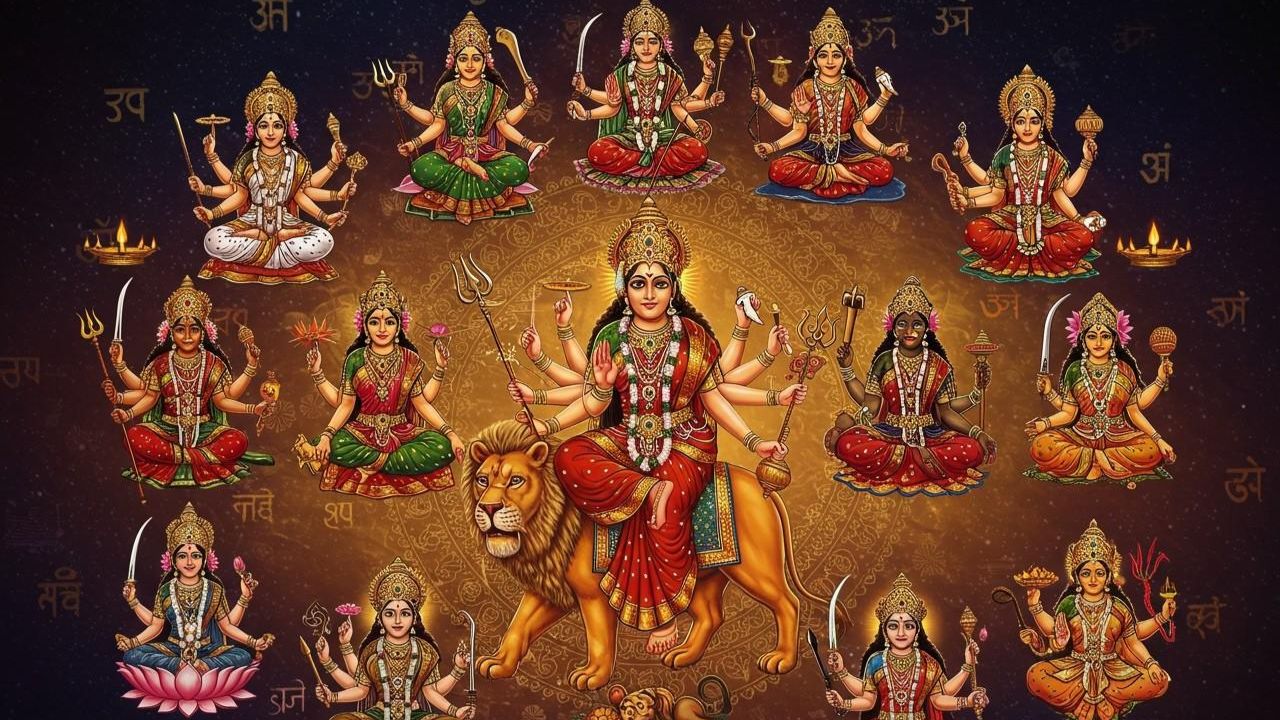 English
English

The country gears up for the auspicious nine-day festival of Navratri today (September 22) and concluds on 2nd October. Devotees will worship the nine manifestations of Maa Durga, each day dedicated to a unique form.

Nine Forms of Durga
New Delhi: Navratri festival has begun with great enthusiasm across India. Devotees immerse themselves in fasting, prayers, cultural events, and vibrant Garba and Dandiya nights, celebrating the nine divine forms of Maa Durga with devotion and joy.
During Navratri, devotees worship the nine incarnations of Goddess Durga over nine days. Let’s take a look at all the avatars of Maa Durga and their significance
Shailaputri
“Shailaputri” means Daughter of the Mountain. She is the daughter of King Himavan and Queen Mena.
Significance: Shailaputri symbolizes strength, purity, and devotion. She represents the root of spiritual power, guiding devotees toward discipline and righteousness.
Brahmacharini
“Brahmacharini” means one who practices strict penance. She represents devotion, austerity, and spiritual discipline.
Significance: Brahmacharini symbolizes steadfastness, patience, and self-control. She inspires devotees to follow the path of knowledge, purity, and dedication.
Chandraghanta
In Hinduism, Chandraghanta is the third navadurga aspect of goddess Mahadevi, worshipped on the third day of Navaratri. Her name Chandra-Ghanta, means "one who has a half-moon shaped like a bell".
Her third eye is always open, signifying her perpetual readiness for battle against evil.
Kushmanda
“Kushmanda” comes from Ku - little, Usha - energy, Anda - cosmic egg, meaning the creator of the universe. She is believed to have created the world with her divine smile.
Significance: Kushmanda symbolizes cosmic energy, vitality, and the power of creation. She is worshipped for health, strength, and prosperity.
Skandamata
“Skandamata” means Mother of Lord Kartikeya. She represents motherhood, compassion, and nurturing power.
Significance: Skandamata symbolizes love, devotion, and courage. She blesses her devotees with strength, wisdom, and prosperity. Worshipping her is believed to bring peace of mind and remove obstacles.
Katyayani
“Katyayani” is named after Rishi Katyayan, who performed penance to invoke her. She represents strength, courage, and the power to destroy evil.
Significance: Katyayani symbolizes valor, righteousness, and protection of devotees. She is worshipped to overcome difficulties, enemies, and negative energies. Traditionally, she is also considered the Goddess of courage for unmarried girls seeking a good life partner.
Kaalratri
“Kaalratri” means “the dark night of death”. She represents destruction of evil and removal of fear.
Significance: Kaalratri symbolizes courage, fearlessness, and the power to eliminate negativity.
Mahagauri
“Mahagauri” means “extremely fair” or “pure and radiant”. She symbolizes purity, serenity, and calmness.
Significance: Mahagauri represents peace, devotion, and spiritual wisdom.
Siddhidatri
“Siddhidatri” means “bestower of supernatural powers (Siddhis)”. She represents spiritual fulfillment, wisdom, and perfection.
Significance: Siddhidatri symbolizes knowledge, enlightenment, and divine blessings.
The country gears up for the auspicious nine-day festival of Navratri today (September 22) and concluds on 2nd October. Devotees will worship the nine manifestations of Maa Durga, each day dedicated to a unique form.